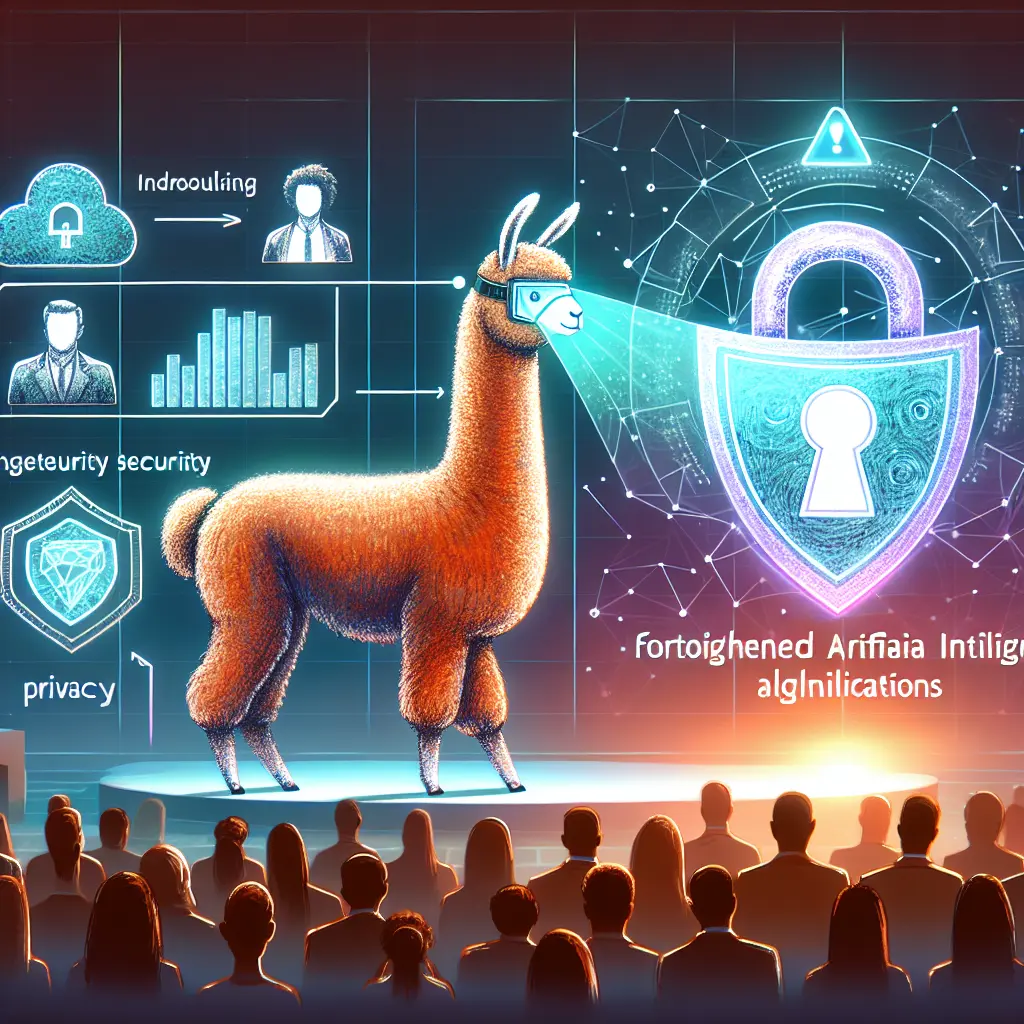In a rapidly evolving digital landscape, advancements in artificial intelligence (AI) are bringing both tremendous opportunity and new cybersecurity challenges.
As AI technologies become integral to our daily lives, safeguarding these systems and their users is a critical priority. Recently, a leading tech giant unveiled a series of security and privacy-focused initiatives aimed at reinforcing the protection of its open-source AI applications and large language models (LLMs). These efforts underscore the growing importance of cybersecurity measures in the AI domain.
The latest announcements centered on the company’s flagship large language model, Llama, which has seen widespread adoption for various applications. Recognizing the unique risks that AI presents—including data leaks, adversarial attacks, and misuse—the company rolled out several security enhancements designed to bolster the defenses of open-source AI models, enhance privacy protection mechanisms, and support responsible AI deployment.
Bolster the defenses of open-source AI models: Open-source projects can be vulnerable to external manipulation or exploitation. The newly released tools aim to help developers identify and address potential weaknesses before they can be exploited.
Enhance privacy protection mechanisms: As AI models process vast quantities of user data, maintaining privacy is paramount. The new updates introduce additional privacy safeguards to ensure sensitive information remains confidential. Guidance and resources are also provided to encourage ethical AI development and usage, helping organizations avoid inadvertent security gaps.
Key Cybersecurity Features Introduced
Among the highlights of the new suite are automated vulnerability scanning to detect weaknesses early, secure model sharing protocols to minimize tampering or unauthorized access during distribution, adoption of privacy-by-design frameworks to ensure user data protection at every stage, and open collaboration for threat intelligence among developers and cybersecurity experts to foster a resilient open-source AI ecosystem.
Automated Vulnerability Scanning: Enhanced scanning capabilities have been integrated to automatically detect vulnerabilities within AI applications, assisting developers in patching issues early in the development lifecycle.
Secure Model Sharing Protocols: New protocols for sharing and deploying AI models are being implemented, reducing the risk of model tampering or unauthorized access during distribution.
Privacy-by-Design Frameworks: The adoption of privacy-by-design principles ensures that user data protection is considered at every stage of model development and deployment.
Why These Advances Matter
The intersection of AI and cybersecurity is a dynamic space where both threats and defenses evolve quickly. Malicious actors are increasingly targeting AI systems to extract sensitive data or manipulate outputs. Robust security measures not only protect users but also maintain trust in the technology itself.
Organizations adopting open-source AI tools must be vigilant in implementing security best practices. The latest initiatives provide them with essential resources to stay ahead of emerging threats while fostering innovation.
As AI continues to shape the future of technology, prioritizing cybersecurity remains non-negotiable. The recent strides in securing open-source AI applications highlight a commitment to building trustworthy, resilient, and private AI systems for everyone.
For those interested in learning more about these advancements, you can read further details at this article.
Stay vigilant, stay secure—and let’s continue building a safer digital world together.










Leave a Comment